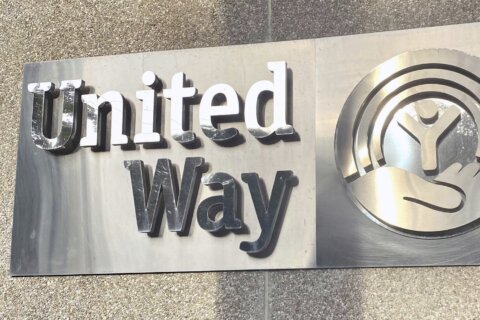WASHINGTON — A track defect that led to the train derailment near Metro’s Smithsonian Station earlier this month was “erroneously deleted” from a routine report submitted to repair crews, according to an initial review Metro released Friday.
Two Metro employees involved in the July track inspection that first detected the spreading of the track have resigned. Metro’s investigation also found that multiple visual inspections of the track failed to detect broken fasteners at the derailment site, which allowed the track to spread apart.
According to the report, the root cause of the derailment is “failure of the rail fasteners that hold the rail in place, which resulted in rail spreading wide enough for a wheel axle to drop between the rails.”
But the new report also details how the loose section of track was missed.
According to Metro’s investigation, on July 9, a Track Geometry Vehicle identified four “level black” track defects. Such defects need to be addressed immediately because the track is at risk of failure if trains continue to run along it.
The operator of the Track Geometry Vehicle correctly noted three of the defects, but on the fourth he “erroneously deleted the defect from his ‘exception’ report, believing to to be a routine anomaly, such as those he is trained to see and delete,” according to the report. The other three defects were correctly reported and repaired.
The Track Geometry Vehicle operator and a supervisor both resigned after the derailment. Metro’s report did not say whether any employees have been disciplined for their role in the derailment, according to Metro’s report.
Several inspections by employees walking the track also missed the wide gauge issues and broken fasteners between July 9 and Aug. 6, the report says.
The six-car train was traveling just 13 mph at the time it derailed, the report said.
The early morning derailment shut down several downtown stations and disrupted three commutes for thousands of riders. No riders were on the train and no one was hurt.
“That such a serious error went undetected with no checks and balances in place reveals gaps in Metro’s safety and policies and procedures,” says Michael Goldman, chairman of the Metro Board’s Safety Commission.
Metro says it is now reviewing Track Geometry Vehicle reports at the end of each inspection, and will conduct more robust visual inspections of the track. The entire system is also being reinspected, speed restrictions are in place on tight curves and older fasteners will be replaced. And track geometry technicians now have the authority to pull a section of rail out of service so immediate repairs can be made.
The Amalgamated Transit Union Local 689, which represents Metro employees, declined to comment to WTOP about the derailment report.
Rep. Gerry Connolly, a Northern Virginia Democrat who has criticized Metro’s safety record since smoke filled a Yellow Line tunnel killing a women in January, said the report highlights Metro’s “inadequate culture of safety and competence which has plagued the system for so long.”
“While the resignation of two employees directly involved in the inspection process offers some modicum of accountability, I hope the Metro board will not hesitate to take further disciplinary actions, if necessary,” Connolly said in a statement.
Rep. Chris Van Hollen, a Maryland Democrat, said the derailment demonstrates a lack of checks and balances needed to backstop against inevitable human errors.
“These are unacceptable safety lapses that simply cannot be tolerated,” he said.
View the complete report:
Metro report on August 6, 2015 derailment
WTOP’s Ari Ashe and Max Smith contributed to this report.







